Stew’s Introduction
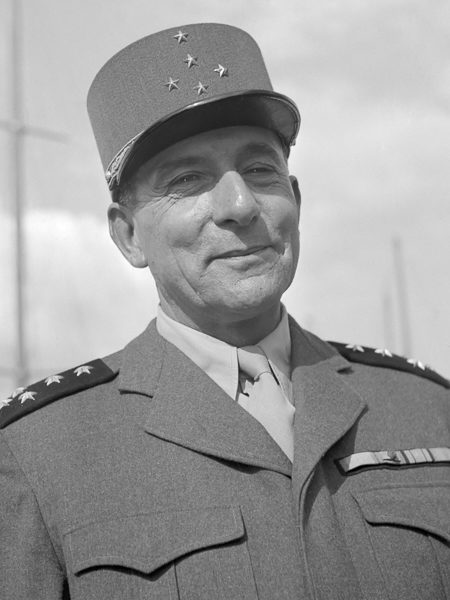
I’m very pleased to have Jeff Koch as our guest blogger today. Jeff’s title about a forgotten hero is very true. However, the number of memorials and streets named in honor of Jean de Lattre de Tassigny throughout France keeps his name in the eye of the public. The problem is the majority of the population probably doesn’t know anything about his accomplishments. Until Jeff introduced me to General de Lattre de Tassigny, I had never heard of him. He’s not someone who shows up in the books I read as part of my research on the new book (Where Did They Put the Gestapo Headquarters? A Walking Tour of Nazi Occupied Paris). As I did some preliminary reading on the general, I don’t think I’ve ever seen so many decorations bestowed on anyone as General Jean de Lattre de Tassigny. As you’ll see, he was one of the most beloved French military leaders of both world wars.
Meet Jean de Lattre de Tassigny
“An optimist is a man who plants two acorns and buys a hammock” – Jean de Lattre de Tassigny
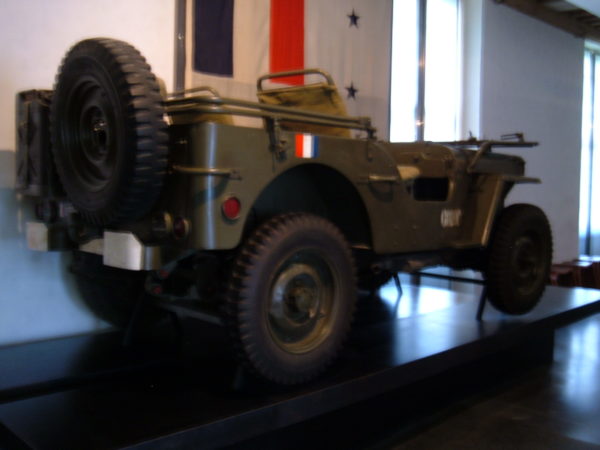
The history of France in World War II includes bravery and collaboration, leadership and surrender, sacrifice and betrayal. The most familiar French name, one might say the face of France in the war was Charles DeGaulle. Another, more colorful, but less known, French military leader inspired discipline and courage in his men and served his nation with distinction through three wars.
Jean Joseph Marie Gabriel de Lattre de Tassigny (1889–1952) was born in the Vendée. He finished fifth in his class at the École Spéciale Militaire de Saint-Cyr. During World War I de Lattre de Tassigny was wounded five times. A lance was so deeply imbedded in him that a French cavalryman had to put his foot on de Lattre de Tassigny’s chest in order to dislodge it. He earned eight citations including France’s highest honor, the Légion d’honneur. He would later bestow the Légion d’honneur on Audie Murphy the American war hero and Hollywood star.
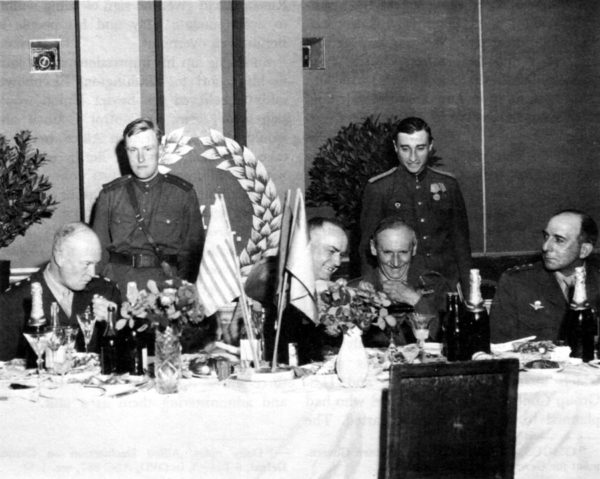
Prior to World War II de Lattre de Tassigny was instrumental in turning the French 14th Infantry Division into a disciplined fighting force with great esprit de corps. His unit fought the German invasion with determined resistance grudgingly yielding ground until the French surrendered. He was ordered to halt in place instead of retreating to Southern France to avoid capture by the invaders.
World War II and Vichy France
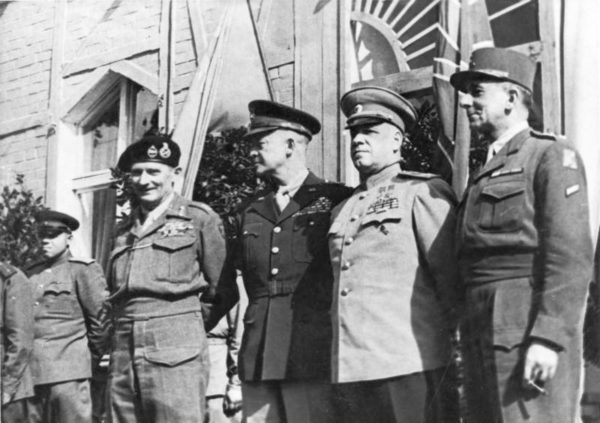
He served with the Vichy forces until his arrest in 1942 for his efforts to organize an anti-German force. He escaped to join the Allies and earned command of the French First Army. General de Lattre de Tassigny took a leading role in Operation Dragoon, fighting his way northeast from the Riviera to Germany. General Jacob L. Devers, the commander of the U.S. Sixth Army Group, gave de Lattre de Tassigny command of four U.S. divisions, making him the only French general to command U.S. troops during the war.
The only bumps in his relationship came when de Lattre de Tassigny held out to prevent Strasbourg from being recaptured and when he captured Ulm and Stuttgart, two towns clearly in the U.S. Zone of operation and occupation.
Commander of French Forces in Vietnam
Following the war, de Lattre de Tassigny commanded the French occupation forces and then became inspector general of the French Army. He was given command of the French forces in Vietnam when morale was ebbing and the French were losing their grip on the military situation. Morale improved significantly and he inspired a number of major victories inflicting heavy losses on the Vietminh.
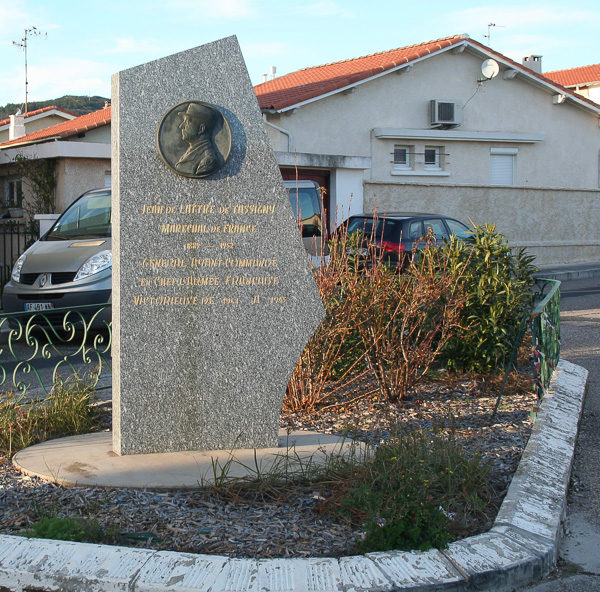
In March, 1951, de Lattre de Tassigny’s only son was killed in action during the battle for Nam Dinh. He had been instructed by his father to hold the town at all costs against three Vietminh divisions. Shortly thereafter, illness would force the father’s return to France where he would succumb to cancer in 1952.
Post Mortem
Life magazine described de Lattre de Tassigny’s funeral in Paris as the “biggest military funeral France had seen since the death of Marshal Foch in 1929.” His body was taken through 11 miles of Paris streets in a series of funeral processions. His coffin lay in state in four different locations: his home, the chapel at Les Invalides, the Arc de Triomphe, and in front of the Cathedral of Notre Dame. His pallbearers included Dwight Eisenhower and Bernard Montgomery.
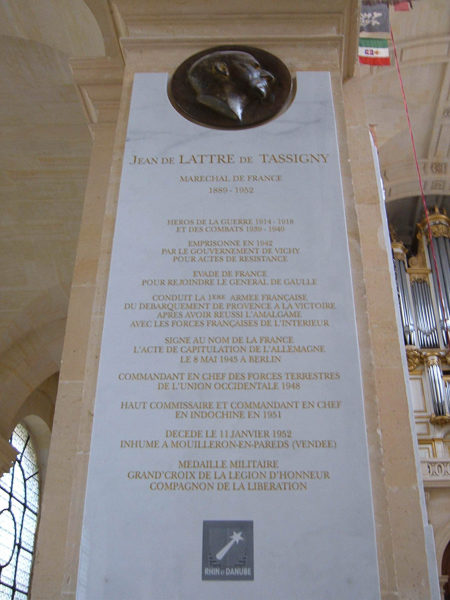
Church bells rang from every steeple, flags were flown at half-staff, and he was posthumously made a Marshal of France – the highest rank in the French army (equivalent to the American five-star general). The journey from the Arc de Triomphe to Notre Dame took place at night and the coffin was escorted by members of the Garde Républicaine on horseback carrying torches. He was laid to rest next to his son in his home town while his 97-year old father watched. Having lost a grandson and son in rapid succession, the senior de Lattre de Tassigny merely said “destiny is hard.”
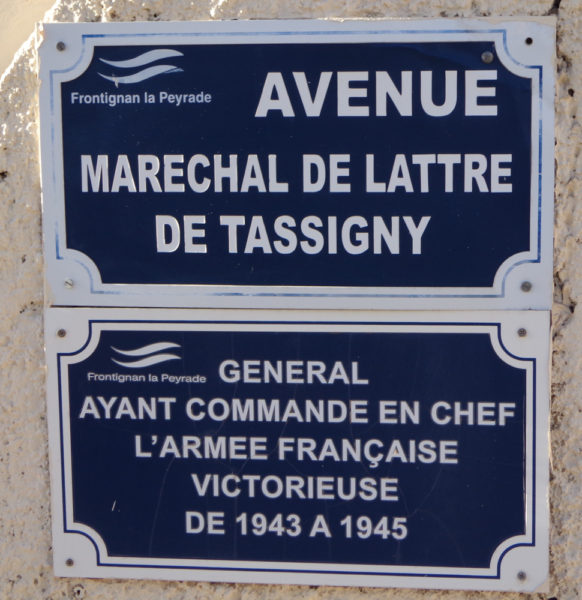
Read More About Marshal Jean de Latter de Tassigny
Jean de Lattre de Tasigny is mentioned frequently in the last book of Rick Atkinson’s great WWII trilogy, The Guns at Last Light. Guy Salisbury’s book So Full A Glory is an excellent biography of the general for those who want to read more about his life.
Meet Jeff Koch
Jeff Koch is an independent business development, insurance, and association membership benefit program management consultant in Nashville, Tennessee. He is an amateur historian (a “history geek”) and a member of the Freolac Club and a World War II study group. His preferred presentation topics are the history of his birthplace (Pittsburgh), military and industrial history of World War II, and interesting and obscure historical characters. He graduated from the University of Pittsburgh with a degree in Industrial Engineering and also holds a Master of Business Administration from the Owen Graduate School of Management at Vanderbilt University.
What’s New With Sandy and Stew?
I am preparing the draft of all the walks for both volumes of Where Did They Put the Gestapo Headquarters? Sandy and I will use these to actually walk the routes to ensure our directions are correct, the buildings are where we tell you they are, and take photos (some of which will match up to photos taken during the German occupation).
One of the problems we are anticipating is the high security level, especially around sensitive government buildings (e.g., the president’s palace and embassies). One of our stops is the Musée Jeu de Paume. During the Occupation, this was the repository or warehouse for confiscated pieces of art taken from Jewish art dealers and families. After reading the museum’s website, it was clear that photography was prohibited. So I contacted the press attaché for the museum and Annabelle gave us permission to take interior photos for the new book.
That got me to thinking about other sensitive sites. Perhaps contacting the American embassy might produce some credentials that allow us to take photos. Well, good luck with that! It was easier dealing with Annabelle than it is with our own embassy. Stay tuned as I won’t give up (yet).
Someone Is Commenting On Our Blogs
If there is a topic you’d like to see a blog written about, please don’t hesitate to contact me. I love hearing from you so keep those comments coming.
Why Would You Want To Buy Our “Walks Through History” Books?
Simple.
You like to travel and experience history and historical events. You like to see original buildings that had a significant impact on the people and events of the history you’re engaged with. You want to know the stories behind the brick and mortar in front of you.
The walking tour books are meticulously researched so you can go directly to those sites and learn about the building’s history as well as an introduction to some of the more interesting people associated with it.
Thank You
Sandy and I appreciate you visiting with us. We have some exciting things on the horizon and we’ll keep you updated as we go along.
Share This:
Follow Stew:
Find Stew’s books on Amazon and iBooks.
Please note that we do not and will not take compensation from individuals or companies mentioned or promoted in the blogs.
Walks Through History
Copyright © 2017 Stew Ross
